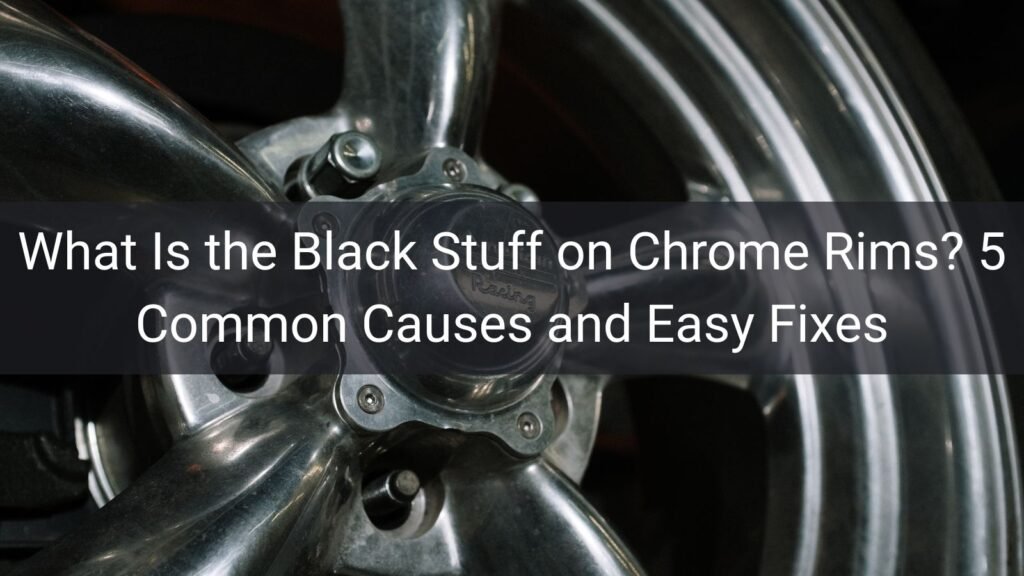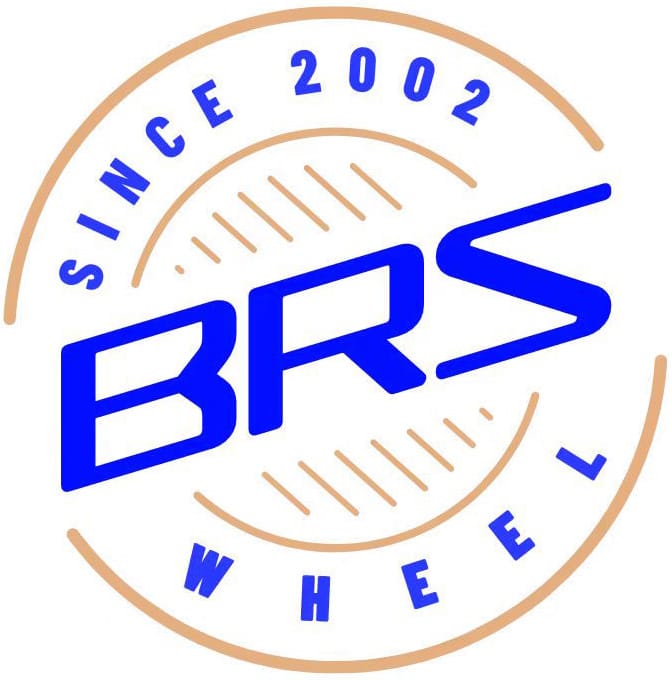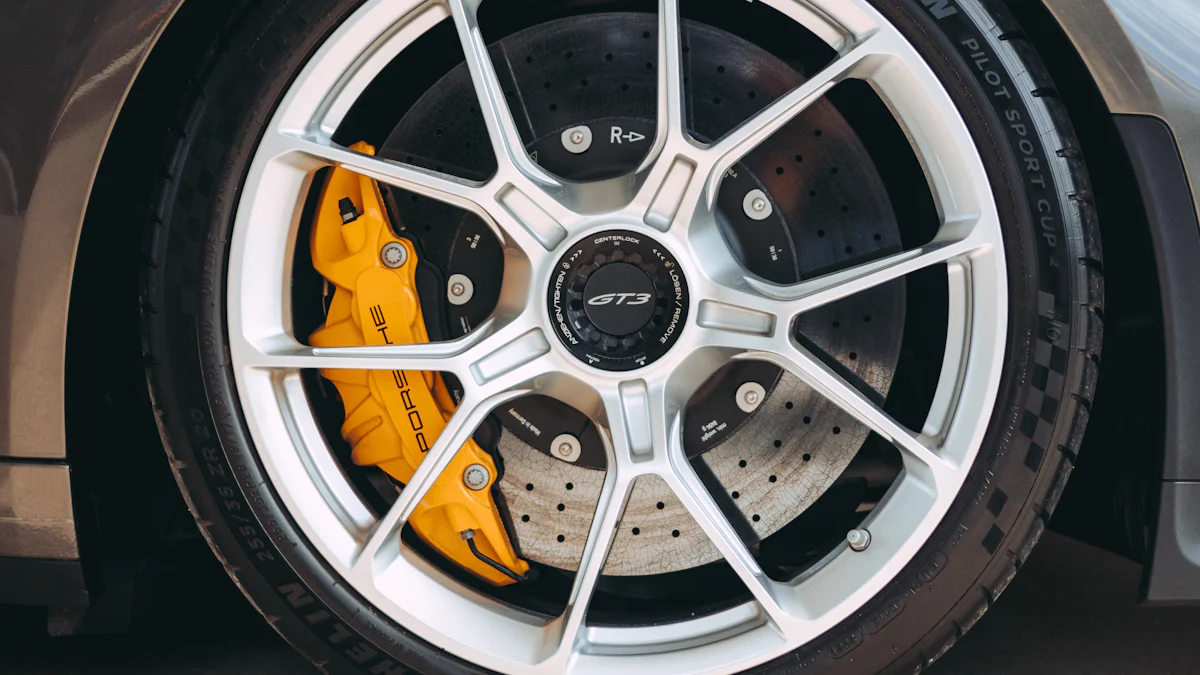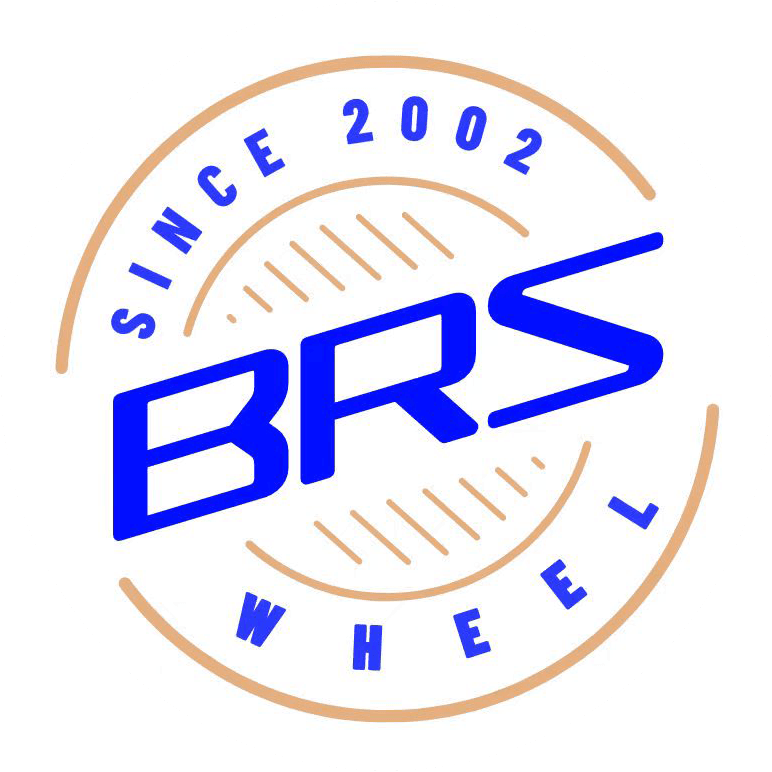Was ist der schwarze Belag auf Chromfelgen? 5 häufige Ursachen und einfache Lösungen
- Unter admin1

Chrom-Räder verleihen jedem Fahrzeug einen Hauch von Glanz - aber die Entdeckung mysteriöser schwarzer Rückstände auf ihren glänzenden Oberflächen kann frustrierend sein. In diesem Leitfaden erklären wir die fünf häufigsten Gründe für diese hartnäckige schwarze Schmiere, zeigen Ihnen, wie Sie sie sicher entfernen können, und geben Ihnen Expertentipps von Ningbo BRS Auto Parts Co, Ltd. Hersteller von kundenspezifischen Stahlrädernum Ihre Felgen in einem tadellosen Zustand zu halten.
1. Bremsenstaubablagerung
Die Ursache: Wenn sich die Bremsbeläge abnutzen, setzen sich mikroskopisch kleine Metall- und Kohlenstoffpartikel - der so genannte Bremsstaub - an Ihren Rädern fest. Auf Chromoberflächen kann dieser Staub als dunkler, fettiger Film erscheinen.
Lösung:
- Spülen Sie die Räder gründlich mit Wasser ab.
- Sprühen Sie einen pH-neutralen Felgenreiniger auf und lassen Sie ihn 2-3 Minuten einwirken.
- Vorsichtig mit einer Bürste mit weichen Borsten aufrühren.
- Abspülen und mit einem Mikrofaserhandtuch abtrocknen.
Tipp: Für härtere Ablagerungen verwenden Sie ein spezielles Eisenentfernungsspray vor dem Felgenreiniger.
2. Straßenteer und Asphalt
Die Ursache: Beim Fahren auf neu asphaltierten oder geteerten Straßen setzen sich klebrige schwarze Teertröpfchen auf den Felgen ab. Wenn er unbehandelt bleibt, kann Teer Chrom im Laufe der Zeit.
Lösung:
- Tragen Sie einen handelsüblichen Teerentferner oder WD-40 direkt auf die betroffenen Stellen auf.
- Lassen Sie es 1-2 Minuten einweichen.
- Wischen Sie den Teer mit einem sauberen Tuch ab.
- Mit Schmierseife waschen und abspülen.
Pro Beratung von BRS: Unsere kugelgestrahlten Stahlräder weisen eine mikrostrukturierte Oberfläche auf, die das Anhaften von Teer verhindert und die Reinigung erleichtert.
3) Gummirückstände von Reifen
Die Ursache: Frische oder neue Reifen verlieren manchmal winzige Gummipartikel, die an den Radkappen haften bleiben und als schwarzer Fleck erscheinen.
Lösung:
- Verwenden Sie einen milden Entfetter und ein weiches Tuch, um die Gummi-Öle zu lösen.
- Nachspülen und mit Felgenreiniger nachbehandeln.
- Gründlich trocknen, um Wasserflecken zu vermeiden.
4. Oxidation und Korrosion
Die Ursache: Im Laufe der Zeit können Feuchtigkeit und Streusalz dazu führen, dass die Verchromung korrodiert, was sich in Form von dunklen Flecken oder Flecken äußert.
Lösung:
- Prüfen Sie die Räder auf tiefe Lochfraßstellen - falls vorhanden, kann eine professionelle Nachbearbeitung erforderlich sein.
- Bei leichter Korrosion mit chromspezifischer Metallpolitur und einem weichen Pad polieren.
- Versiegeln Sie die Räder mit einem hochwertigen Wachs oder einer Keramikbeschichtung, um sie vor zukünftiger Korrosion zu schützen.
Warum BRS sich abhebt: Alle BRS-Räder werden in unserem 100.000 m² großen Werk einer zweistufigen elektrophoretischen Beschichtung (E-coat) mit anschließender Pulverbeschichtung unterzogen, die eine hervorragende Korrosionsbeständigkeit gewährleistet - auch in rauen Umgebungen.

5. Unterbeschichtetes Belagmaterial (OEM-Räder)
Die Ursache: Bei einigen Werksrädern wird eine schwarze Grundierung verwendet, um Gussunvollkommenheiten zu versiegeln. Schäden an dieser Schicht können wie schwarze Rückstände auf der Chromoberfläche aussehen.
Lösung:
- Wenn die Grundierung abgeplatzt ist, schleifen Sie die Stelle leicht an (Körnung 600), um die Kanten zu glätten.
- Mit einer geeigneten Grundierung und Chromsprühfarbe ausbessern.
- Klarlack für einen gleichmäßigen Glanz.
Tipps zur vorbeugenden Wartung
- Früh und oft reinigen: Lassen Sie Verunreinigungen nicht einbrennen - waschen Sie die Räder alle 1-2 Wochen.
- Verwenden Sie Qualitätsprodukte: Scharfe Säuren oder Scheuerschwämme können die Verchromung beschädigen.
- Mit Dichtungsmasse schützen: Tragen Sie nach jeder Wäsche eine radspezifische Versiegelung auf, um Staub und Schmutz abzuwehren.
FAQs
F1: Ist der schwarze Rückstand schädlich für Chrom?
A1: Unbehandelt können Bremsstaub und Straßenschmutz die Chromschicht angreifen, was zu Korrosion und Lochfraß führt. Eine regelmäßige Reinigung ist unerlässlich.
F2: Kann ich Haushaltsreiniger verwenden, um schwarze Schmiere zu entfernen?
A2: Vermeiden Sie säure- oder bleichmittelhaltige Reiniger - verwenden Sie pH-neutrale Felgenreiniger oder spezielle Teer- und Eisenentferner.
F3: Wie oft sollte ich meine Chromfelgen pflegen?
A3: Je nach Fahrbedingungen und saisonaler Salzbelastung möglichst alle 1-2 Wochen.
Erhalten Sie den Glanz Ihres Fahrzeugs, indem Sie das schwarze Zeug an der Quelle bekämpfen und Räder wählen, die gegen gängige Verschmutzungen resistent sind. Für dauerhafte Leistung und Schönheit entdecken Sie die präzisionsgefertigten Stahlräder von Ningbo BRS mit branchenführenden Beschichtungen, die großartig aussehen und lange halten.
📞 +86-1981-0666-863 ✉️ carrie@brsautoparts.com 🌐 https://brsrim.com
- Posted in:Allgemein






